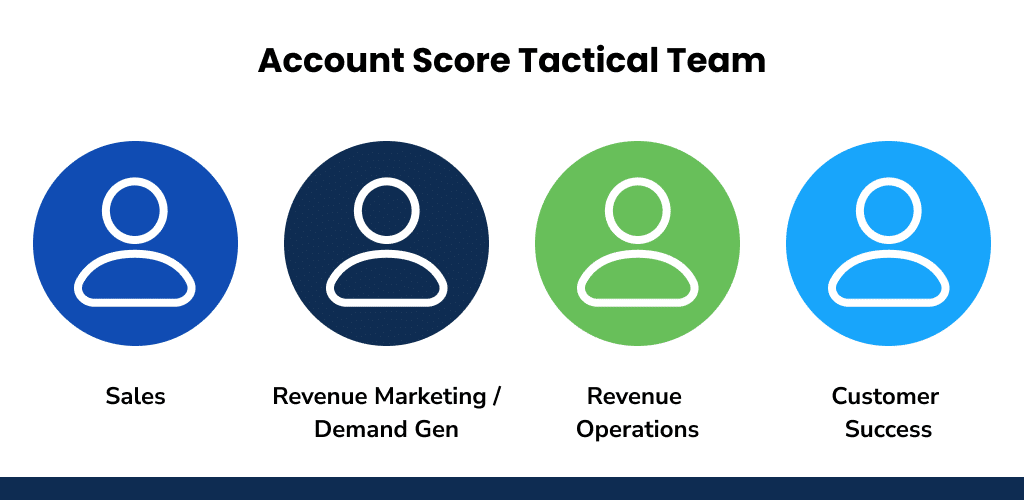Today we’re delving into the hidden complexities of account scores. The term “account score” might seem simple but trust us, the mechanics are anything but. It’s like that complex algorithm running behind your favorite app’s clean interface.
Upfront it’s worth pointing out that there’s no universal formula – what works for one organization won’t necessarily work for another. And there’s no single way to look at them either; in some cases they can be used to determine which accounts to focus retention efforts on, some need to understand where new markets exist and others use them to figure out where to focus Sales efforts. But there are common traits to identifying where to focus your GTM efforts and that’s what we’ll touch on here. Let’s head down the rabbit hole.
Let’s tackle the first debate that often rears its head when teams sit down to define their scoring criteria; is the ICP score the same as an Account Score? Put simply, an ICP score is made up of firmographic data that determines whether an account is the right size and shape to be a good fit customer – this will include industry, geography, employee size, revenue, etc. An Account Score, however, is more dynamic and changes to reflect behaviors. And it’s those behaviors that indicate whether now is the right time to try to engage this account that matches our ICP.
So what type of behaviors should become criteria for this account score? Here’s where the ‘no one-size fits all’ warning comes into play but consider triggers like consistent website visits, accounts displaying relevant third-party intent and those meaningfully engaging with your marketing efforts. A common mistake here is to forget the rich data already being captured in your CRM – is it important to have multiple senior contacts already identified or maybe it’s worth noting those already engaging with your sales team.
BONUS TIP: Do not forget about negative scoring criteria. What behaviors can an account show that means their score should be suppressed? At a minimum, look at your Closed Lost opportunities in the last 6 months – are they really worth your time and effort right now? If you work in SaaS, how about those with competitor scripts already on their site?
It should be clear by now that creating an account score isn’t a one-person show. Nor is it for one Department to complete. It requires the expertise of revenue operations, sales, marketing, and customer success teams. Each will have a view on the behavioral triggers that are meaningful to them but beyond that, they can bring something data can’t; experience. It’s not unusual for someone to say ‘I don’t have the data to back this up but I feel like every time an account that fits our ICP comes to two webinars in a row, they tend to convert into pipeline’. Those theories can then be verified (or debunked) – hunches and experience guides what data analysis needs to be done.
Build your Account Scoring Tactical Team

Which leads us to our final recommendation – instead of playing the guessing game, tap into your historical data goldmine. Take a look at both recent closed lost and closed won deals. Analyze the prelude to these outcomes to understand what behaviors were being displayed before success or fizzling out. The timeframe of this analysis should align with your average sales cycle duration.
Talking of timeframes, you may be wondering how frequently this work should be done. And that’s another ‘no single answer’ answer, I’m afraid. Each time you enter a new market, launch a new product or adapt your GTM strategy, account scoring needs to be reviewed, if not updated. It’s important to create an account score that helps determine how to treat accounts so make sure you create scoring criteria that’s fit for purpose for each segment of your GTM – per product line, per geo, per industry, etc. The more granular you can get, the more actionable the scores will ultimately be.
And there you have it – the nitty-gritty of account scores demystified. It’s a collaborative effort that demands data-driven decision-making, behavioral insights, and a dash of historical context. Now you have the elements to go grab your GTM colleagues and craft your unique account score(s)!